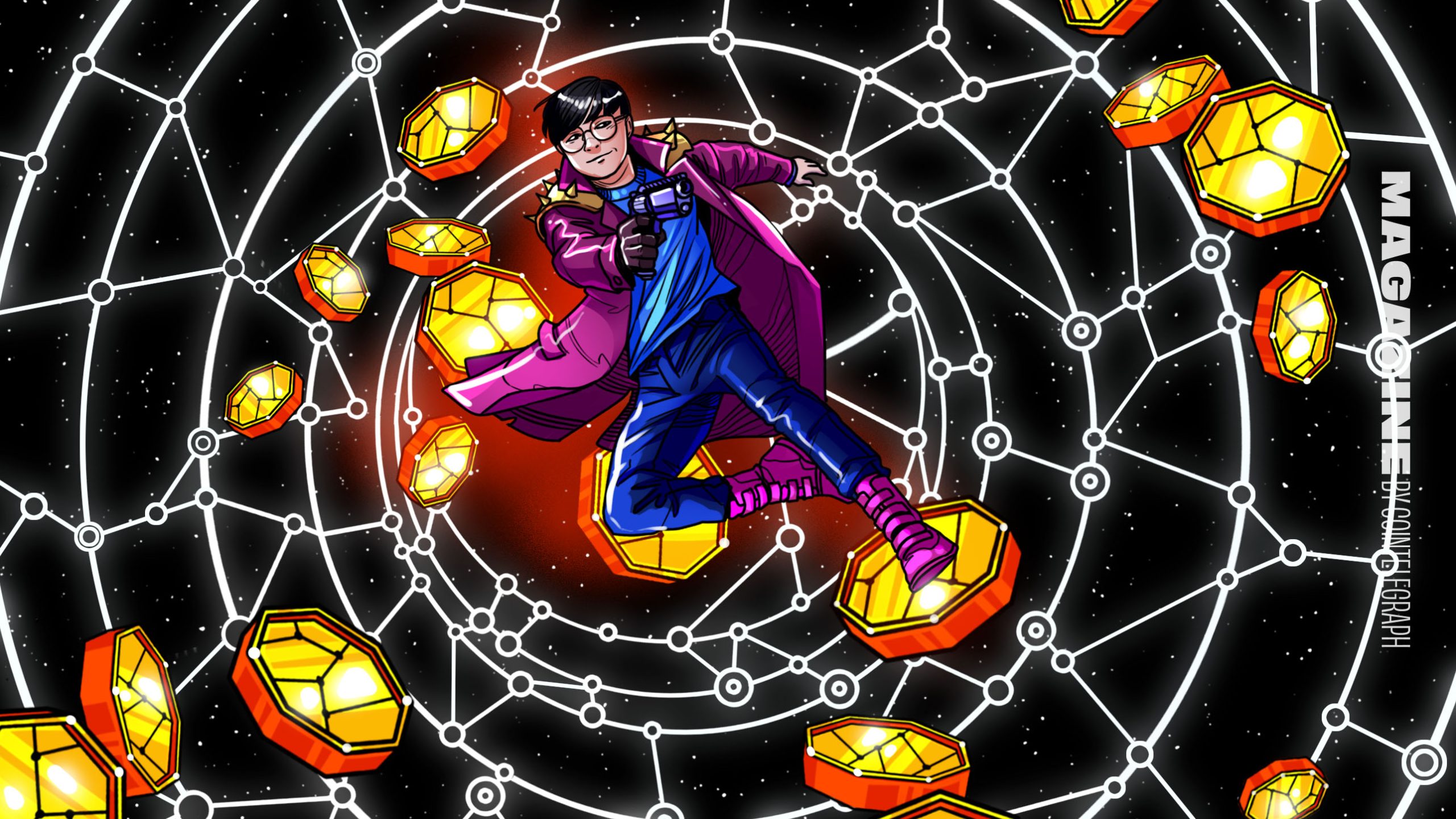
TerrorismPhoto bypostermywall.com
In this article, we will examine the role of the internet and social media in the spread of terrorism worldwide. We will look at how digital technologies have enabled the spread of terrorist activities, as well as how governments and law enforcement have responded. We will then explore the implications of these developments for the future of global security. By the end of this article, readers will have a better understanding of the evolving nature of terrorism and the impact of digital technologies on the security landscape. We will also discuss potential strategies for addressing the threats posed by cyberterrorism. We will also discuss how governments, corporations, and ordinary citizens can help counter the spread of terrorism in the information age.
Introduction to the Role of the Internet and social media in Terrorism: Exploring how the rise of the internet and social media has impacted the spread of terrorism, and what implications this has for counterterrorism efforts.
The internet and social media have impacted how terrorism is carried out today. As the use of the internet and social media has grown, terrorists have been able to easily spread their messages, recruit new members, and execute their plans. Terrorists’ use of the internet and social media has allowed them to reach a larger audience and gain support for their cause.
The rise of the internet and social media has had a dramatic impact on the ability of terror organizations to spread their messages of violence and hate. Social media platforms, such as Twitter and Facebook, have become powerful tools for terrorist groups to spread their propaganda and recruit new members. The use of the internet also allows terrorist groups to communicate and coordinate their activities more effectively, as well as to collect and analyze data on potential targets.
The implications of this for counter-terrorism efforts are significant. Terrorism experts have noted that the internet and social media have enabled terrorist groups to reach a much wider audience. This has made it easier for them to spread their messages and recruit new members. This has made it more difficult for counter-terrorism agencies to monitor and disrupt terror works. Furthermore, the ease with which terrorist groups can use the internet to spread their message has contributed to making it difficult to combat extremist ideology and prevent radicalization.
In response to these developments, counter-terrorism agencies have had to adapt their strategies and tactics to keep up with the changing nature of the threat. Counter-terrorists are increasingly relying on technology to detect and disrupt terrorist networks. This includes the use of data mining, predictive analytics, and machine learning to identify potential terror threats. In addition, counterterrorism agencies are also utilizing social media monitoring tools to identify and mitigate extremist content online. Finally, they are working with technology companies to ensure that their platforms are not used to propagate extremist messages.
The Impact of Social Media on Terrorist Organizations: Examining how terrorist networks have used the internet to expand their reach and recruit new members, and how this has changed the face of modern terrorism.
Terrorism is a global threat that has been amplified in recent years by the increasing use of the internet by terrorist networks. The internet has enabled terrorist networks to easily expand their reach and recruit new members, transforming the face of modern terrorism.
The internet has provided terrorist networks with unprecedented access to potential recruits and sympathizers around the world. Through social media, terrorist networks can disseminate their message, target potential recruits, and even provide instructions on how to carry out their objectives. This has led to a rise in the number of recruits from different countries and backgrounds. This has allowed terrorist networks to expand beyond their original geographical boundaries and create a truly global presence.
In addition, the internet has also enabled terrorist networks to coordinate their activities in ways that were previously impossible. Through online forums, encrypted messaging platforms, and dark web networks, terrorist networks can remain anonymous and secure while planning and carrying out their operations. This has made it more difficult for law enforcement and intelligence agencies to monitor and disrupt terrorism-related activities, creating a new and more dangerous form of terrorism.
The internet has truly revolutionized the face of modern terrorism, allowing terrorist networks to expand their reach and spread their message around the world. It is now up to governments, law enforcement, and intelligence agencies to develop effective strategies to combat this growing global threat.
The Recruiting Power of Social Media: Investigating how terrorist groups have used social media to spread their extremist ideologies and recruit new members.
The recruiting power of social media has been an essential tool for extremist groups to spread their messages of hate, fear, and terror across the globe. Through social media, these groups have been able to reach a much larger audience than ever before. In addition, they have been successful in recruiting members from all corners of the world.
Social media has enabled terrorist organizations to disseminate their extremist ideologies to a wide range of followers, often in a very short amount of time. Furthermore, terrorist organizations can use social media to amplify their message by sharing videos of attacks, live streaming their propaganda, and forming secure online networks for their members. These members are outside their normal geographical boundaries.
By using highly effective social media strategies, extremist groups have been able to target vulnerable individuals and often coerce them into joining their cause. They frequently use psychological tactics such as guilt, fear, and intimidation to lure potential recruits into their cause. This type of recruitment tactic has become increasingly effective with the prevalence of social media, as it allows them to appeal to large numbers of people quickly and easily.
In addition to using social media to recruit individuals, extremist groups have also found success using it to finance their operations. Terrorist organizations have become increasingly sophisticated in their use of social media to solicit donations and encourage their followers to purchase items such as weapons, ammunition, and military supplies. In recent years, digital currencies such as Bitcoin have become a popular form of payment for terrorist organizations.
The recruitment power of social media has enabled extremist groups to expand their reach and recruit individuals from around the world. This has resulted in a marked increase in terrorist activities and has raised serious concerns about the safety and security of people everywhere. In order to combat the threat of extremism, it is essential for world governments to devise strategies that discourage individuals from joining terrorist organizations. In addition, it is essential to promote social media literacy, so that people can make informed decisions about the information they consume

Social media TerrorPhoto bywww.postermywall.com
The Dark Web and Terrorist Networks: Exploring the potential use of the dark web by terrorist networks and how it has impacted the spread of terrorism.
The dark web is a part of the World Wide Web that is not accessible to traditional search engines and requires a special form of software to access. It is also known as the ‘invisible web.’ It is a place where criminals, drug dealers, and terrorists can share information and operate without the risk of being caught by law enforcement.
Terrorist networks have been known to use the dark web to spread propaganda, recruit individuals, and even plan and coordinate attacks. Those who are well-versed in the dark web can find a variety of illegal goods and services, such as weapons, forged documents, and drugs. Furthermore, the dark web is often used to facilitate money laundering and other financial crimes.
In addition to its criminal elements, the dark web also has some legitimate uses. It is a place where whistleblowers can share information without fear of retribution, and journalists can use it to hide their sources and protect their stories. It also provides a platform for freedom of expression and the exchange of ideas in societies where censorship is a major issue.
The dark web has become a haven for cyber criminals who use it to launch malicious attacks, steal private data, and perpetrate other types of digital fraud. Hackers also use the dark web as a platform to launch denial-of-service attacks, where they can disrupt legitimate services or websites by flooding them with bogus requests.
The Role of the Internet in Terrorist Propaganda: Investigating how terrorist networks have used the internet to spread disinformation and propaganda, and how this has impacted their recruitment efforts.
The internet has become an invaluable resource for terrorist organizations. In the age of digital and social media, terrorist networks have used the internet to spread disinformation, propaganda, and recruitment messages. Using online forums, blogs, and social media, terror groups have been able to effectively reach a wide audience, and their message has been amplified and spread far and wide.
Terrorist networks have been using the internet to spread disinformation and propaganda for some time, with an increasing focus on recruitment. The internet provides a key platform for these networks and gives them an opportunity to reach a wide global audience.
The use of the internet to spread disinformation and propaganda has enabled terrorist networks to get their message out to a wide range of potential recruits. This has enabled them to recruit people from different parts of the world and to target specific demographics. This has been particularly effective at targeting vulnerable populations such as young people and those feeling alienated from their societies. Furthermore, terrorist networks have also used the internet to spread false information and to manipulate public opinion. This has enabled them to create an atmosphere of fear and influence public perceptions of their cause.
The use of the internet to spread disinformation and propaganda has had a profound impact on the success of terrorist recruitment efforts. It has enabled them to reach a wider audience and target more vulnerable populations. It has also enabled them to manipulate public opinion and create an atmosphere of fear. As such, it is essential that governments, law enforcement, and civil society organizations take steps to counter this trend. This is to ensure that terrorist networks are not able to use the internet to their advantage.
Counterterrorism Efforts and the Internet: Examining how governments and other counterterrorism organizations are using the internet to combat the spread of terrorism, and how this has been effective in reducing terrorist activity.
The internet has become an extremely valuable tool for both terrorist organizations and counterterrorism organizations in the modern age. Terrorist organizations utilize the internet to spread their message, recruit followers, and coordinate attacks. In response, many governments and counterterrorism organizations have begun to use the internet as both a tool for research and intelligence gathering. In addition, the internet has become a platform for countering the spread of terrorism.
In recent years, governments and other counterterrorism organizations have been leveraging the internet to combat the spread of terrorism. They have been able to use the web to track, monitor, and disrupt terrorist activity before it can take form. By utilizing various tools and techniques, they can identify potential threats and take action to prevent them from materializing. This can include censoring or closing down websites or social media accounts linked to terrorist organizations, as well as monitoring online chat boards or forums to identify suspicious activity.
The results of this effort have been largely successful. By using the internet to monitor and disrupt terror activity, governments and counterterrorism organizations have been able to effectively reduce the number of attacks and other threats posed by terrorist organizations. This has resulted in a decrease in the number of casualties, as well as fewer resources being used to combat terrorism. Furthermore, it has enabled governments to better understand the motivations and strategies of terrorist organizations, giving them a clearer understanding of how to combat them.
As technology continues to advance and terrorist organizations become more adept at utilizing the internet to spread their message and recruit new members, governments and counterterrorism organizations must be willing to adapt their strategies to stay ahead of the game. Using the internet to combat terrorism is a powerful tool that, when used properly, can prove to be a very valuable asset in the fight against terrorism. However, it is imperative to be mindful of the potential consequences of using the internet to fight terrorism. The improper use of such tools can lead to privacy violations and other unwanted outcomes. As such, governments and counterterrorism organizations must continue to be vigilant in the use of their tools and techniques to effectively combat terrorism.
Conclusion.
In conclusion, the role of the internet and social media in the spread of terrorism cannot be ignored. Terrorist groups have used the internet and social media to spread their messages, recruit, raise funds, and plan activities, often with devastating results. While technology can be used to do serious harm, it can also be a powerful tool to combat terrorism. By taking steps to disrupt online terrorist activities and encouraging better digital security, we can make the world a safer place for all.
Sources
Read More: news.google.com









 Bitcoin
Bitcoin  Ethereum
Ethereum  Tether
Tether  XRP
XRP  Solana
Solana  USDC
USDC  Dogecoin
Dogecoin  Cardano
Cardano  TRON
TRON  Lido Staked Ether
Lido Staked Ether  Wrapped Bitcoin
Wrapped Bitcoin  Sui
Sui  Chainlink
Chainlink  Wrapped stETH
Wrapped stETH  Avalanche
Avalanche  Stellar
Stellar  Shiba Inu
Shiba Inu  Hedera
Hedera  Hyperliquid
Hyperliquid  Toncoin
Toncoin  LEO Token
LEO Token  Bitcoin Cash
Bitcoin Cash  Polkadot
Polkadot  Litecoin
Litecoin  WETH
WETH  USDS
USDS  Pi Network
Pi Network  Monero
Monero  Wrapped eETH
Wrapped eETH  Pepe
Pepe  Bitget Token
Bitget Token  Binance Bridged USDT (BNB Smart Chain)
Binance Bridged USDT (BNB Smart Chain)  Ethena USDe
Ethena USDe  Coinbase Wrapped BTC
Coinbase Wrapped BTC  WhiteBIT Coin
WhiteBIT Coin  Uniswap
Uniswap  Bittensor
Bittensor  NEAR Protocol
NEAR Protocol  Aptos
Aptos  Dai
Dai  Aave
Aave  OKB
OKB  Ondo
Ondo  Jito Staked SOL
Jito Staked SOL  Internet Computer
Internet Computer  Ethereum Classic
Ethereum Classic  Cronos
Cronos  BlackRock USD Institutional Digital Liquidity Fund
BlackRock USD Institutional Digital Liquidity Fund